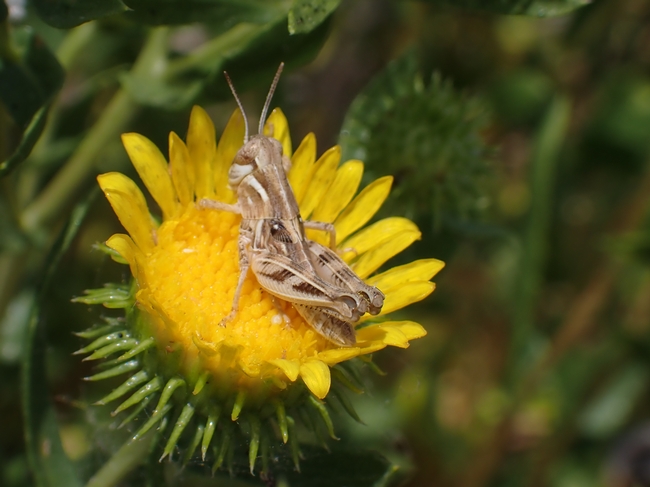Are grasshoppers taking over your garden? Within the last week, we've received several reports of large populations of these pests covering people's plants, especially in Northern California.
Grasshoppers are a sporadic garden pest. Some years you might only notice and few, and other years their populations can boom. Outbreaks usually occur every 8 to 10 years in California, sometimes lasting 1 to 3 years.
The most destructive and widespread grasshopper species is known as the “devastating grasshopper” or Melanoplus devastator. Adults are light gray to tan with dark stripes on their legs. Nymphs are pale yellow, green, or tan. Grasshoppers have chewing mouthparts that remove large sections of leaves and flowers, sometimes devouring entire plants. Garden damage is usually limited to a few weeks in early summer immediately after weeds dry up. However, during major outbreaks grasshoppers will feed on almost any green plant, and damage may occur over a considerably longer period.

Most grasshoppers are generalist feeders, but they prefer young green plants, especially lettuce, beans, corn, carrots, onions, and some annual flowers. Squash and tomatoes, however, are among the vegetables grasshoppers least favor.
Grasshoppers are difficult to control because they can move quickly and frequently. Cover plants with a protective netting or metal screening to deter grasshoppers. Insecticides are not very effective and require frequent applications, so they are not recommended. Pyrethroids may provide some control, but these products are toxic to bees, natural enemies, and aquatic life.
If using a pesticide, always make sure to read the label to ensure it is listed for use on the pest you are dealing with. Be sure the product is labeled for use on the target plant—you don't want to use a product on an edible plant that is only designed for ornamental plants! Homemade “repellents” including oils and vinegars have not proven to be effective and are likely to damage the plant you are trying to protect.
For more information about grasshoppers, visit the UC IPM publication Pest Notes: Grasshoppers.